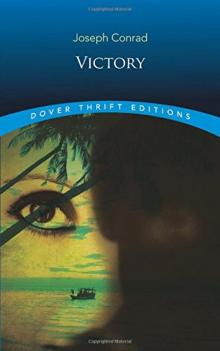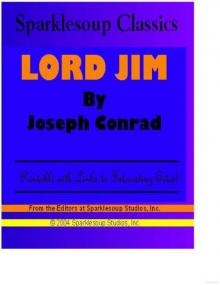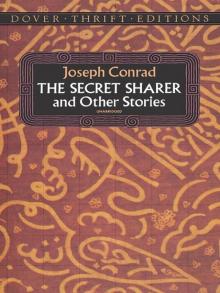- Home
- Joseph Conrad
Heart of Darkness and the Congo Diary (Penguin Classics)
Heart of Darkness and the Congo Diary (Penguin Classics) Read online
PENGUIN CLASSICS
HEART OF DARKNESS AND THE CONGO DIARY
JOSEPH CONRAD (Józef Teodor Konrad Korzeniowski) was born in December 1857 in Berdichev (now in Ukraine) of Polish parents. His father, a poet and translator, and his mother were exiled for nationalist activities and died when he was a child. He grew up and was educated informally in Lemberg (now L’viv) and Krakow, which he left for Marseilles and a career at sea in 1874. After voyages to the French Antilles, he joined the British Merchant Service in 1878, sailing first in British coastal waters and then to the Far East and Australia. In 1886, he became a British subject and received his captaincy certificate. In 1890, he was briefly in the Congo with a Belgian company. After his career at sea ended in 1894, he lived mainly in Kent. He married in 1896 and had two sons.
Conrad began writing, in his third language, in 1886. His first novels, Almayer’s Folly (1895) and An Outcast of the Islands (1896), were immediately hailed as the work of a significant new talent. He produced his major fiction from about 1897 to 1911, a period that saw the publication of The Nigger of the ‘Narcissus’ (1897), Heart of Darkness (1899), Lord Jim (1900), and the political novels Nostromo (1904), The Secret Agent (1907), and Under Western Eyes (1911). Considered “difficult,” his writing received considerable critical acclaim, but not until 1914 after the appearance of Chance did it win a wide public. The dazzling narrative experiments and thematic complexities of Conrad’s earlier fiction are largely absent from his later writings, which are pitched to a more popular audience.
Fame saw the offer of honorary degrees and a knighthood (both declined), capped by a triumphal publicity tour in America in 1923. In addition to novels, Conrad produced short stories, plays, several essays, and two autobiographical volumes, The Mirror of the Sea (1906) and A Personal Record (1908–9). He died in August 1924 at the age of sixty-six.
OWEN KNOWLES, Research Fellow in the University of Hull, is the author of A Conrad Chronology (1989), An Annotated Critical Bibliography of Joseph Conrad (1992), and the Oxford Reader’s Companion to Conrad (2000) (with Gene M. Moore). Advisory Editor of The Conradian, he has edited Conrad’s Almayer’s Folly (1995), and has co-edited A Portrait in Letters: Correspondence to and about Joseph Conrad (1996) and, for Cambridge University Press, Volumes VI and IX (2002 and forthcoming) of The Collected Letters of Joseph Conrad.
ROBERT HAMPSON is Professor of Modern Literature in the Department of English at Royal Holloway, University of London. A former editor of The Conradian, his publications include Joseph Conrad: Betrayal and Identity (1992) and Cross-Cultural Encounters in Conrad’s Malay Fiction (2001). The author of numerous articles, he has also edited Victory and Nostromo, Rudyard Kipling’s Something of Myself and Soldiers Three/In Black and White, and Rider Haggard’s King Solomon’s Mines for Penguin.
J. H. STAPE has taught in universities in Canada, France, and the Far East. Author of The Several Lives of Joseph Conrad (2007), he has edited The Cambridge Companion to Joseph Conrad (1996) and Conrad’s Notes on Life and Letters (2004), and co-edited A Personal Record (2007) and Volumes VII and IX (2005 and forthcoming) of The Collected Letters of Joseph Conrad for Cambridge University Press. He has also co-edited Conrad’s An Outcast of the Islands and The Rover for Oxford World’s Classics, and has written on Thomas Hardy, Virginia Woolf, William Golding, and Angus Wilson. He is Contributing Editor of The Conradian: The Journal of the Joseph Conrad Society (UK).
TIMOTHY S. HAYES is an Instructor of English at Auburn University in Alabama. His research interests include narrative theory and the novel, particularly the works of Robert Louis Stevenson and Joseph Conrad.
JOSEPH CONRAD
Heart of Darkness
A Penguin Enriched eBook Classic
Edited with an Introduction and Notes by
OWEN KNOWLES
The Congo Diary
Edited with Notes by
ROBERT HAMPSON
Enriched eBook Features Editor
TIMOTHY S. HAYES
General Editor
J. H. STAPE
PENGUIN BOOKS
PENGUIN CLASSICS
Published by the Penguin Group
Penguin Books Ltd, 80 Strand, London WC2R 0RL, England
Penguin Group (USA) Inc., 375 Hudson Street, New York, New York 10014, USA
Penguin Group (Canada), 90 Eglinton Avenue East, Suite 700, Toronto, Ontario, Canada M4P 2Y3
(a division of Pearson Penguin Canada Inc.)
Penguin Ireland, 25 St Stephen’s Green, Dublin 2, Ireland
(a division of Penguin Books Ltd)
Penguin Group (Australia), 250 Camberwell Road, Camberwell, Victoria 3124, Australia
(a division of Pearson Australia Group Pty Ltd)
Penguin Books India Pvt Ltd, 11 Community Centre, Panchsheel Park, New Delhi – 110 017, India
Penguin Group (NZ), 67 Apollo Drive, Rosedale, North Shore 0632, New Zealand
(a division of Pearson New Zealand Ltd)
Penguin Books (South Africa) (Pty) Ltd, 24 Sturdee Avenue, Rosebank, Johannesburg 2196, South Africa
Penguin Books Ltd, Registered Offices: 80 Strand, London wc2r 0rl, England
www.penguin.com
First published 1899
Published in Penguin Classics 2007
1
Heart of Darkness Introduction and Notes, A Note on the Texts, Glossary
copyright © Owen Knowles, 2007
‘The Congo Diary’ Introduction copyright © Owen Knowles, 2007
Notes copyright © Robert Hampson, 2007
Author Biography, Chronology copyright © J. H. Stape, 2007
Further Reading copyright © J. H. Stape, Owen Knowles and Robert Hampson, 2007
Map copyright © The Joseph Conrad Society (UK), 2007
Penguin Enriched eBook Classics Features © Timothy S. Hayes, 2008
All rights reserved
The moral right of the editors has been asserted
Except in the United States of America, this book is sold subject to the condition that it shall not, by way of trade or otherwise, be lent, re-sold, hired out, or otherwise circulated without the publisher’s prior consent in any form of binding or cover other than that in which it is published and without a similar condition including this condition being imposed on the subsequent purchaser
ISBN: 978-1-4406-5759-7
Contents
Acknowledgements
Chronology
Introduction to Heart of Darkness
Introduction to ‘The Congo Diary’
Further Reading
A Note on the Texts
Map of the River Congo
HEART OF DARKNESS
THE CONGO DIARY
Appendix: Author’s Notes (1917)
Notes
Glossary of Nautical Terms
Penguin Enriched eBook Classics Features
Filmography
Telling Africa’s Story Today: Recent Films about Africa
Contemporary Reviews of Heart of Darkness
Further Reading
Character Sketches
Diagram of a Typical Congo Steamer ca. 1890
Images of the Congo
Enriched eBook Notes
Acknowledgements
Owen Knowles wishes to record that the task of preparing his edition of Heart of Darkness has been greatly eased by the generous advice of the general editor, J. H. Stape, and the late Hans van Marle. He is also indebted to the work of two of the most influential Conrad critics of recent decades, the late Ian Watt and Professor Cedric Watts.
Robert Hampson wishes to acknowledge the assista
nce of the late Hans van Marle in preparing the annotations to his edition of ‘The Congo Diary’.
Our thanks are due to Donald J. Shewan for the preparation of the map.
Warmest thanks are due to Louisa Sladen for her help in preparing the manuscript.
Chronology
1857 Józef Teodor Konrad Korzeniowski, coat-of-arms Nałęcz, is born on 3 December in Berdichev (Ukraine), the only child of the Polish poet and translator Apollo Korzeniowski and Ewelina (or Ewa), née Bobrowska.
1862 Apollo Korzeniowski, his wife and son are exiled from Warsaw to Vologda, northern Russia.
1865 Ewa Korzeniowska dies of consumption.
1868–9 Permitted to leave Russia, Apollo Korzeniowski relocates to Austro-Hungarian territory with his son, first in Lemberg (now L’viv, Ukraine) and vicinity and then in Cracow, where he dies (May).
1870 Becomes the ward of his maternal grandmother and maternal uncle, Tadeusz Bobrowski, and begins private studies with Adam Pulman, a medical student at Cracow’s Jagiellonian University.
1873 Tours Vienna, Swiss Alps and northern Italy with Pulman. Private studies in Lemberg.
1874–7 Arrives in Marseilles to work for the shippers Delestang et Fils, sailing to the French Antilles in the Mont-Blanc and Saint-Antoine. A period of biographical mystery ensues, involving a possible brief side voyage to Venezuela, gun-running in the Basque country for the doomed cause of the pretender to the Spanish throne and smuggling near Marseilles.
1878 After amassing debts and gambling losses, attempts suicide (February or March). Leaves Marseilles in the British steamer Mavis for Mediterranean waters (Malta and Constantinople) and then lands at Lowestoft, Suffolk. Employed as ordinary seaman in the Skimmer of the Sea (Lowestoft to Newcastle).
1878–80 In the Duke of Sutherland (to Australia) and then the Europa (to Genoa, Sicily and Greece). Passes the British Merchant Service second mate’s examination.
1880–85 Third mate in the Loch Etive (to Australia); second mate in the ill-fated Palestine (bound for Bangkok, but sinks in the Straits of Malacca), ships out of Singapore in the Riversdale (to Madras) and after crossing India by rail joins the Narcissus in Bombay (to Dunkirk). Passes the examination for first mate (1884).
1886 Second mate in the Tilkhurst (Hull to Wales, Singapore, Calcutta, Dundee). Submits first story, ‘The Black Mate’, to a competition for Tit-Bits. Becomes a British subject and passes the captaincy examination, receiving his ‘Certificate of Competency as Master’.
1886–8 Second mate in the Falconhurst (London to Penarth); first mate in the Highland Forest (Amsterdam to Semarang) and Vidar (Singapore to Celebes and Borneo ports); captain of the Otago (to Bangkok, Australia and Mauritius).
1889 Living in Pimlico (London), begins Almayer’s Folly. Visits Bobrowski in the Ukraine.
1890 In the Congo Free State, working for the Belgian company Société Anonyme du Haut-Congo; second-in-command, then temporarily captain, of Congo River steamer Roi des Belges.
1891 Recuperating from African experience in the German Hospital, London, then in Geneva for hydrotherapy. On return, works for warehouse and shippers Barr, Moering, Company.
1891–4 First mate in the passenger clipper Torrens (to Australia), meeting John Galsworthy (1893), later novelist and playwright awarded a Nobel Prize. Second mate in the Adowa (Rouen to Quebec and Montreal, but making only a return voyage from London to Rouen as the company collapses). Sea career ends.
1894 Tadeusz Bobrowski dies. Meets Edward Garnett, his literary mentor and advisor, and Jessie George, his future wife. Though still looking for a berth, turns to professional authorship in earnest.
1895 Almayer’s Folly. In Geneva in the spring for hydrotherapy, and in Paris in August on business for Fountaine(G. F. W.) Hope, his first English friend.
1896 An Outcast of the Islands. After marrying Jessie George, honeymoons in Brittany (April–September), later settling in Stanford-le-Hope, Essex, near Hope and family. Christmas holidays in Cardiff.
1897 Meets Henry James. Writes ‘The Return’ and ‘Karain: A Memory’. Befriends American novelist Stephen Crane and R. B. Cunninghame Graham, socialist and writer. The Nigger of the ‘Narcissus’.
1898 Alfred Borys Conrad born in Stanford. Tales of Unrest. Becomes friendly with Ford Madox Hueffer (later Ford) and H. G. Wells. In Glasgow, looks for a command. The Conrads move to Pent Farm, near Hythe, Kent, sub-let from Ford. ‘Youth, A Narrative’ in Blackwood’s Magazine.
1899 Works on Lord Jim. Heart of Darkness serialized in Blackwood’s Magazine. Meets Hugh Clifford, writer and civil servant in Malaya. The Boer War begins.
1900 Becomes a client of J. B. Pinker’s literary agency. Crane dies. Working-holiday in Belgium with Ford. Lord Jim.
1901 Queen Victoria dies. Works on ‘Amy Foster’, ‘Falk’ and Romance (with Ford). The Inheritors (with Ford).
1902 The Boer War ends. Writes ‘The End of the Tether’. Youth: A Narrative and Two Other Stories.
1903 Works on Nostromo. Typhoon and Other Stories and Romance (with Ford) appear.
1904 Two-month sojourn in London. Engages ‘typewriter’ Lilian M. Hallowes, his secretary on and off for twenty years. Nostromo.
1905 In Capri (January–May). One Day More staged in London. Writes sea papers and critical articles.
1906 In Montpellier (mid-February–mid-April). John Alexander Conrad born in London. The Mirror of the Sea.
1907 In Montpellier (January–May). Writes ‘The Duel’, and then in Geneva (May–August). The Secret Agent. The Conrads move to Luton, Bedfordshire.
1908 Works on Under Western Eyes (then ‘Razumov’). Involved with Ford’s English Review, in which ‘Some Reminiscences’ appears (later A Personal Record).
1909 The Conrads move to Aldington, Kent. The Nature of a Crime, with Ford, with whom he quarrels and breaks off relationship. Writes ‘The Secret Sharer’ and more of Under Western Eyes.
1910 Suffers a mental and physical breakdown, recovery extending into the summer. The Conrads move to Capel House, Orlestone, Kent. Reviews for the Daily Mail (July) and writes ‘A Smile of Fortune’ and ‘The Partner’.
1911 Writes ‘Freya of the Seven Isles’ and works on Chance. Meets novelist André Gide, who later translates ‘Typhoon’ and oversees Conrad’s French translations. Under Western Eyes.
1912 A Personal Record in America, then as Some Reminiscences in England. Writes two articles on the Titanic. ’Twixt Land and Sea. Writes short stories. Meets Richard Curle, journalist and short-story writer, in effect the unofficial private secretary to Conrad’s later career.
1913 Chance. Becomes friendly with Cambridge philosopher Bertrand Russell through Lady Ottoline Morrell. Works on ‘The Planter of Malata’, ‘Because of the Dollars’ and Victory.
1914 Visiting Cracow in late July, the Conrads are caught by the outbreak of war. Taking refuge in Zakopane in the Tatras, return home via Vienna and Genoa (October–November).
1915 Writes ‘Poland Revisited’. Victory and Within the Tides appear. Borys Conrad in basic training in the Army Service Corps, and fights in France for the next few years.
1916 Writes ‘The Warrior’s Soul’ and ‘The Tale’. For the Admiralty, visits naval bases, tours in a minesweeper, takes a flight, and sails in a Q-ship in the North Sea.
1917 Writes prefaces for new editions of Youth, Lord Jim and Nostromo. The Shadow-Line appears. Meets London-based French music critic and journalist Jean Aubry (‘G. Jean-Aubry’), later his first biographer, who succeeds Gide in overseeing the French translations.
1918 Becomes friendly with novelist Hugh Walpole. Writes articles about the Merchant Service and Polish events for the newspapers. Borys Conrad is shell-shocked and gassed. The war ends (11 November).
1919 Basil MacDonald Hastings’s adaptation of Victory has a successful London run, including a royal performance. Moves to Spring Grove, near Wye, Kent. The Arrow of Gold. Moves to Oswalds, Bishopsbourne, near Canterbury.
1920 Polish relativ
e Aniela Zagórska visits the Conrads for six months. The Rescue. Writes, with Pinker, Gaspar the Strongman, a film version of ‘Gaspar Ruiz’. In December, collected editions begin publication in England by Heinemann (in the early new year in America by Doubleday, Page).
1921 Conrad and wife sojourn in Corsica (January–April), celebrating silver wedding anniversary in March. Notes on Life and Letters (collected essays) appears.
1922 J. B. Pinker dies in New York on a business trip, his son Eric taking over management of Conrad. Meets composer Maurice Ravel and poet Paul Valéry. Dramatic version of The Secret Agent flops in London (November).
1923 Triumphant publicity tour in New York, with excursions to Connecticut and Massachusetts (May–June). Briefly in Normandy to arrange for French immersion experience for son John (September). The Rover.
1924 Declines a knighthood. Succumbs to fatal heart attack on 3 August. After Roman Catholic rites, is buried in Canterbury Cemetery. The Nature of a Crime (with Ford) and The Shorter Tales. Ford rushes out Joseph Conrad: A Personal Remembrance.
1925–8 Posthumous works published: Tales of Hearsay and the unfinished Suspense (1925); Last Essays, edited by Richard Curle (1926); Joseph Conrad: Life and Letters (1927), edited by G. Jean-Aubry; the unfinished The Sisters (1928).
Introduction to Heart of Darkness
New readers are advised that this Introduction makes details of the plot explicit.

 Heart of Darkness
Heart of Darkness Lord Jim
Lord Jim The Nigger of the Narcissus (Echo Library)
The Nigger of the Narcissus (Echo Library) Victory (Dover Thrift Editions)
Victory (Dover Thrift Editions) Secret Agent
Secret Agent Nostromo
Nostromo Chance: A Tale in Two Parts
Chance: A Tale in Two Parts Youth
Youth Almayer's Folly
Almayer's Folly The Heart of Darkness and the Secret Sharer
The Heart of Darkness and the Secret Sharer The Arrow of Gold: A Story Between Two Notes
The Arrow of Gold: A Story Between Two Notes The Rescue: A Romance of the Shallows
The Rescue: A Romance of the Shallows The Point Of Honor: A Military Tale
The Point Of Honor: A Military Tale Tales of Unrest
Tales of Unrest Under Western Eyes
Under Western Eyes Gaspar Ruiz
Gaspar Ruiz A Set of Six
A Set of Six Heart of Darkness and the Congo Diary (Penguin Classics)
Heart of Darkness and the Congo Diary (Penguin Classics) Heart of Darkness and Selected Short Fiction
Heart of Darkness and Selected Short Fiction Typhoon
Typhoon Youth, a Narrative
Youth, a Narrative Tomorrow
Tomorrow The Arrow of Gold
The Arrow of Gold The Shadow Line: A Confession
The Shadow Line: A Confession The Rescue
The Rescue Victory (Echo Library)
Victory (Echo Library) The Brute
The Brute Romance
Romance A Personal Record
A Personal Record Lord Jim: A Tale
Lord Jim: A Tale Heart of Darkness and Selected Short Fiction (Barnes & Noble Classics Series)
Heart of Darkness and Selected Short Fiction (Barnes & Noble Classics Series) Within the Tides
Within the Tides The Secret Sharer and Other Stories
The Secret Sharer and Other Stories Falk
Falk Heart of Darkness and The Secret Sharer
Heart of Darkness and The Secret Sharer Chance
Chance An Anarchist
An Anarchist The Secret Agent: A Simple Tale
The Secret Agent: A Simple Tale The Secret Agent
The Secret Agent Complete Works of Joseph Conrad (Illustrated)
Complete Works of Joseph Conrad (Illustrated) Heart of Darkness and the Congo Diary
Heart of Darkness and the Congo Diary Notes on Life & Letters
Notes on Life & Letters Typhoon (Single Story)
Typhoon (Single Story)